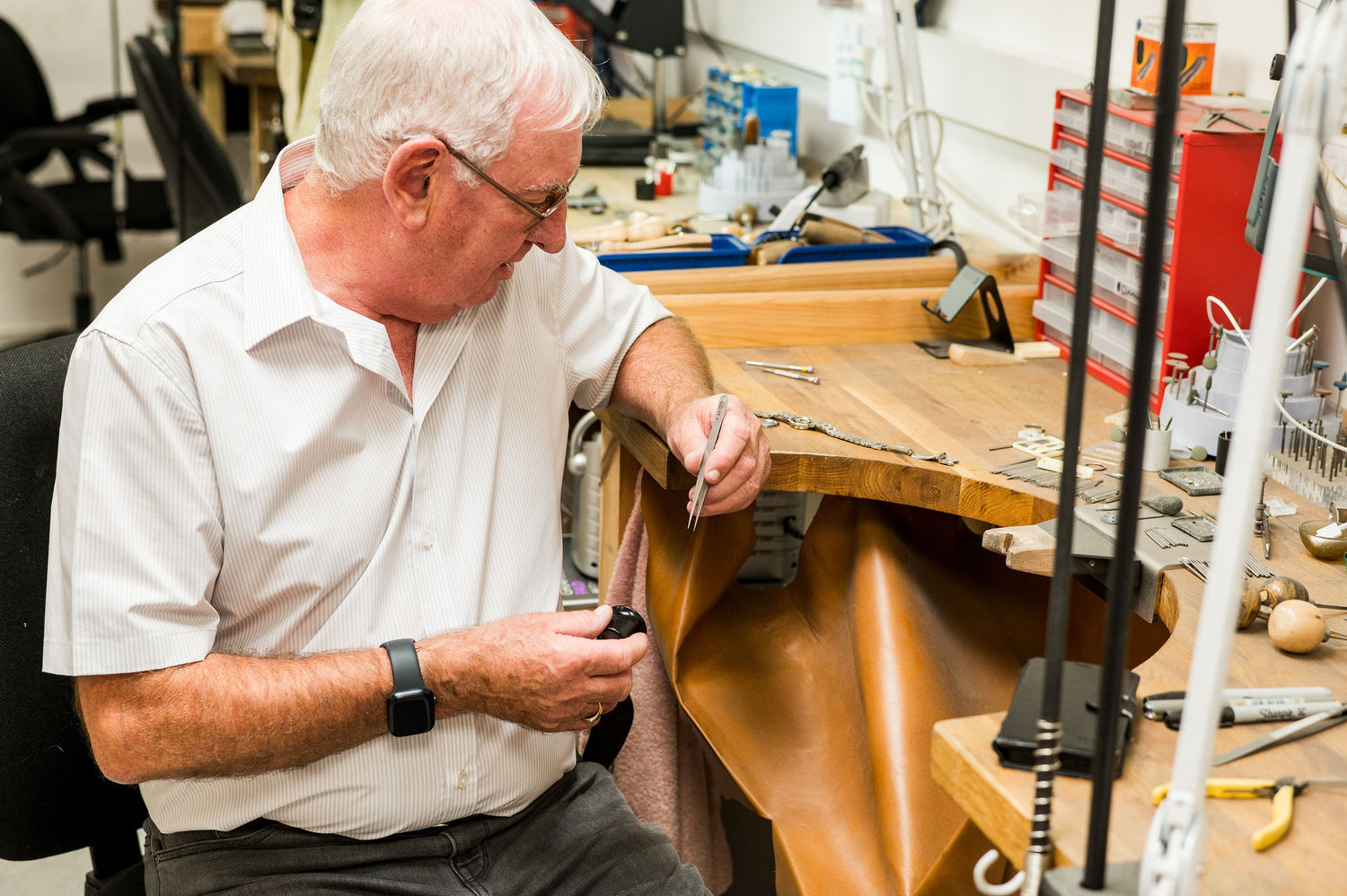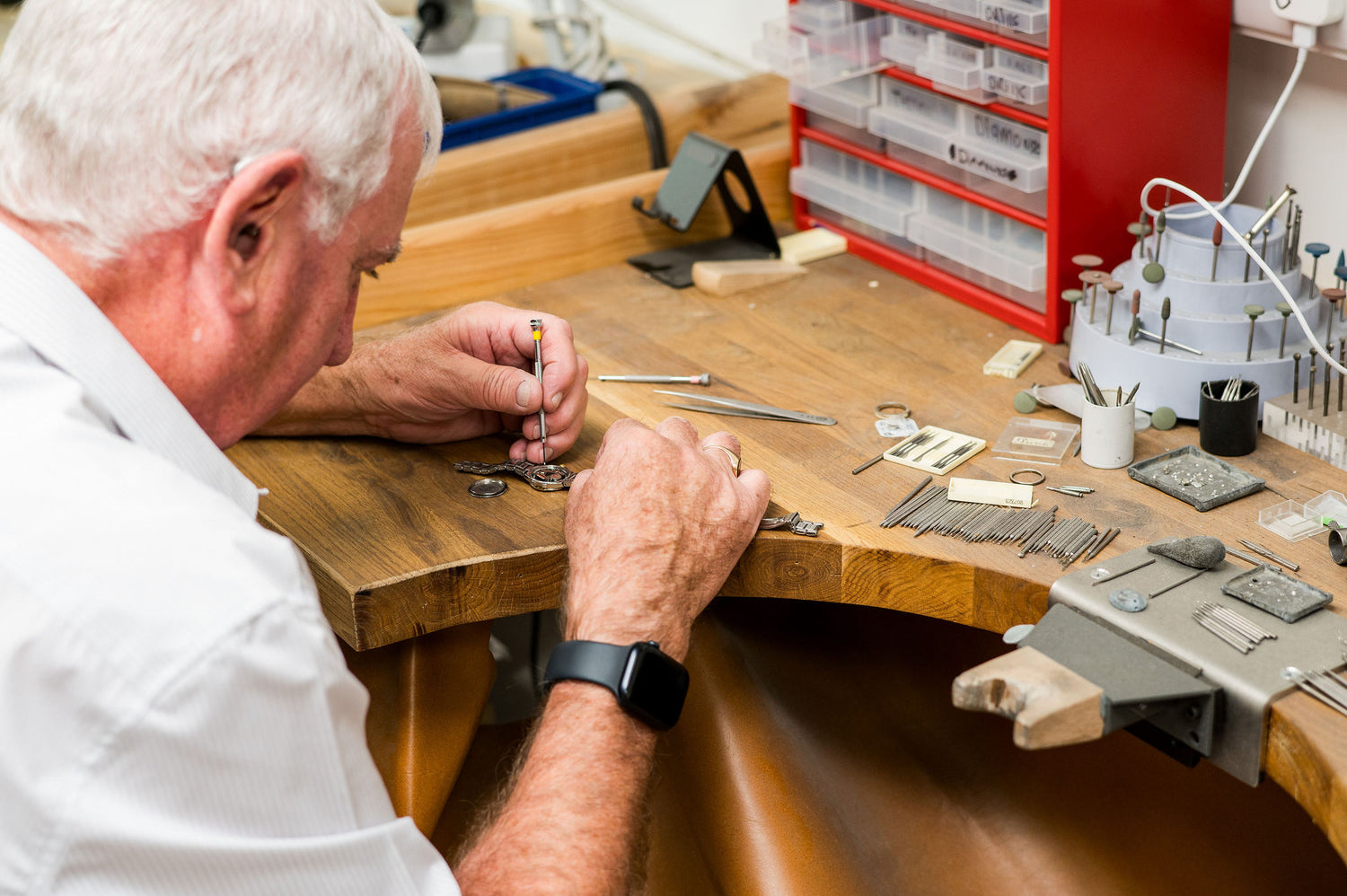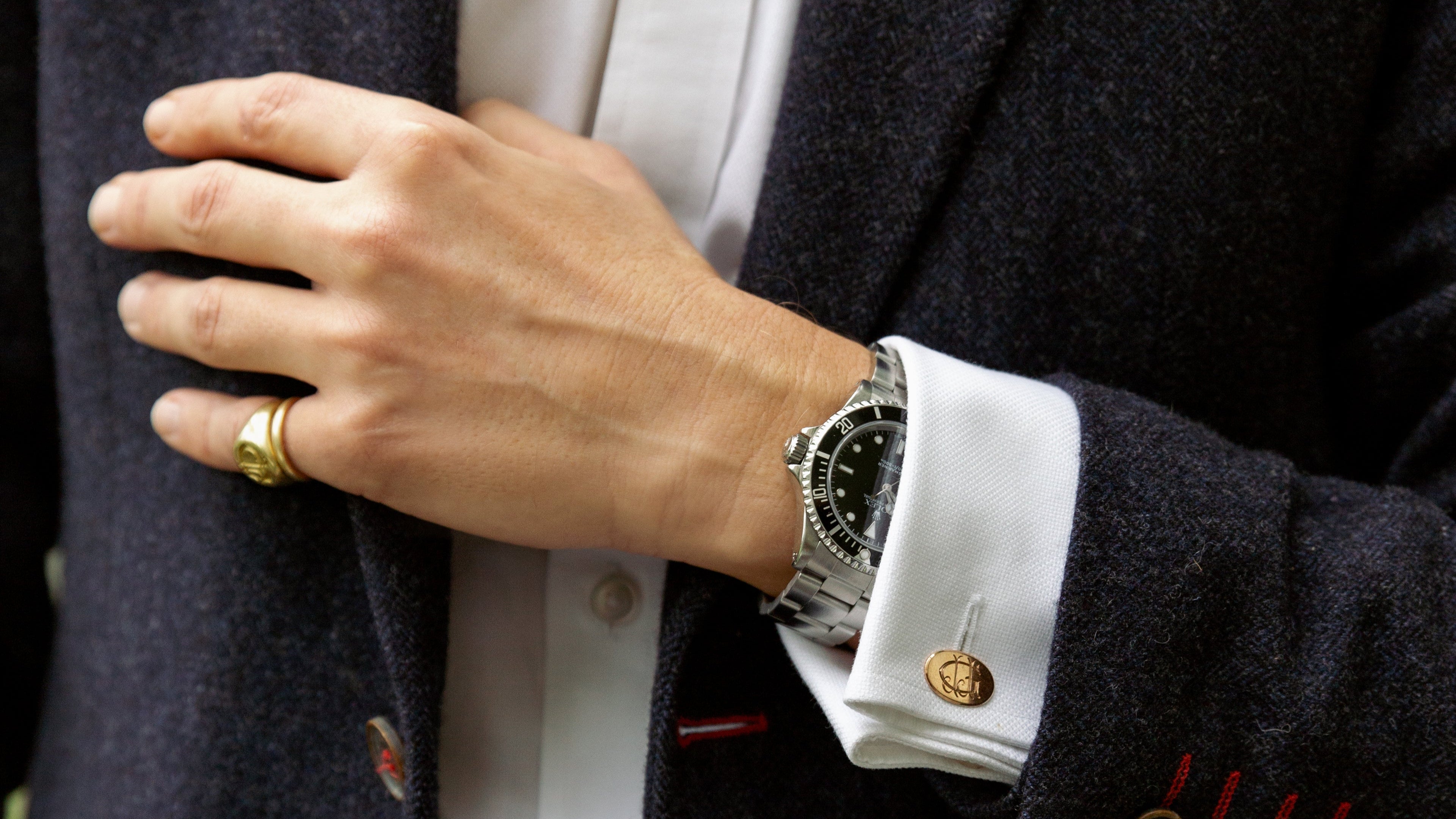Watch Care Guide
Watches are more than instruments of time - they are tokens of heritage, precision, and personal significance. This guide offers trusted care advice from our workshop to help you protect and preserve the beauty and function of your timepiece for years to come.

Caring for your watch
A fine watch is both a precision instrument and a personal heirloom. Built to last, it still requires care to maintain its performance and appearance. With daily wear, subtle signs of strain can develop over time. These may include a faded strap, moisture under the glass, or small shifts in timekeeping accuracy.
We recommend checking for early signs such as a weakened clasp, a worn crown, or a dry seal, which can affect the reliability of your watch. Mechanical timepieces in particular benefit from periodic servicing to keep their movements running smoothly.
Try to avoid exposing your watch to extreme temperatures, strong magnets, or harsh chemicals like cleaning agents or perfume. Water resistance also diminishes over time, so even splash-resistant models should be tested if they are exposed to moisture regularly.
If your watch is vintage or especially delicate, it may require closer attention. Our workshop can advise on cleaning, resealing, strap replacement and full servicing, helping you keep your watch looking exceptional and functioning as it should.
-

Wipe After Wearing
Use a soft cloth to gently remove daily dust, fingerprints or moisture from the case and strap.
-

Avoid Magnetic Fields
Keep your watch away from laptops, speakers or phones. Magnets can
affect timekeeping.
-

Face Up
Store your watch dial-side up in a lined
box or tray, away from direct sunlight or humidity.
-

Don’t Overwind
If you wear a manual watch, wind it slowly once a day and stop as soon as you feel resistance.
-

Last on, first off
Put your watch on last. Perfumes and moisturisers can degrade leather straps and seals.

Water Resistance Explained
While many watches are labelled as water resistant, the reality of what that means is often misunderstood. Water resistance does not guarantee that a watch is waterproof, nor does it mean it can be worn during all water-based activities. Ratings like 30, 50, or 100 metres reflect lab conditions and don’t account for real-world factors like movement, heat, or pressure.
A 30-metre rating generally protects against splashes or rain but is not suitable for submersion. A 50-metre watch may withstand light swimming but should not be worn for diving. Even models with higher ratings can be vulnerable over time. Seals can degrade, and crown screws can loosen, especially after exposure to heat or chemicals such as soaps and perfumes.
We recommend removing your watch before showering, swimming, or using saunas, unless it’s specifically designed for it. If your watch has been opened, it should be re-tested. Our workshop can reseal and check water resistance as part of a routine service, ensuring it continues to perform reliably in everyday conditions.

When to Service Your Watch
A well-crafted watch is designed to last, but like any finely tuned mechanism, it benefits from regular maintenance. Over time, oils within the movement can dry out, microscopic dust can settle inside the case, and components can begin to wear. These changes often develop slowly and silently, long before the watch stops or begins to run noticeably fast or slow.
For mechanical watches, servicing every three to five years is typically recommended to maintain accuracy and prevent long-term wear. Quartz watches also require attention, particularly after battery replacements, as opening the case can compromise water resistance and allow dust or moisture to enter. Even watches that appear to be functioning well may have underlying issues that only a trained eye can identify.
If you notice condensation beneath the glass, changes in timekeeping, or a crown that feels stiff or unusually loose, it may be time to have the watch checked. Our workshop carries out full servicing with great care, cleaning the movement, replacing worn parts where needed, and resealing the case to protect the watch from further damage. Regular attention not only ensures reliable performance but also preserves the integrity and value of your timepiece over time.

Caring for Mechanical Watches
Mechanical watches rely on precise, hand-assembled movements that need regular winding and thoughtful handling. Manual watches should be wound once a day, off the wrist, stopping as soon as resistance is felt to avoid damaging the mechanism. Automatic models stay powered through wear but benefit from occasional winding if not worn daily.
Over time, oils inside the movement dry out and fine dust can build up, which affects accuracy. We recommend servicing every three to five years to preserve performance and prevent long-term wear. Avoiding knocks, moisture and extreme temperatures will also help your watch run smoothly for years to come.
Caring for Quartz Watches
Quartz watches are powered by a battery and known for their accuracy and reliability, but they still require care to perform at their best. Most batteries last between one and three years and should be replaced promptly to avoid leakage, which can damage the movement.
Although quartz models need less maintenance than mechanical watches, they should still be checked periodically for water resistance, especially after a battery change. Keep your watch away from magnets, extreme heat, and moisture to protect both its movement and seals. With occasional servicing and careful wear, a quartz watch will remain a dependable part of your everyday routine.
Battery Recycling
As part of our commitment to the environment, Walter Bull & Son offers a free battery recycling service.
If you’re having a watch or clock battery replaced with us, you can leave your old batteries with us and we’ll ensure they are disposed of safely and in line with the UK Battery Recycling Regulations (WEEE Directive).
Simply bring your used batteries into our Cirencester store and we’ll take care of the rest.
 Contact Us
Contact Us






